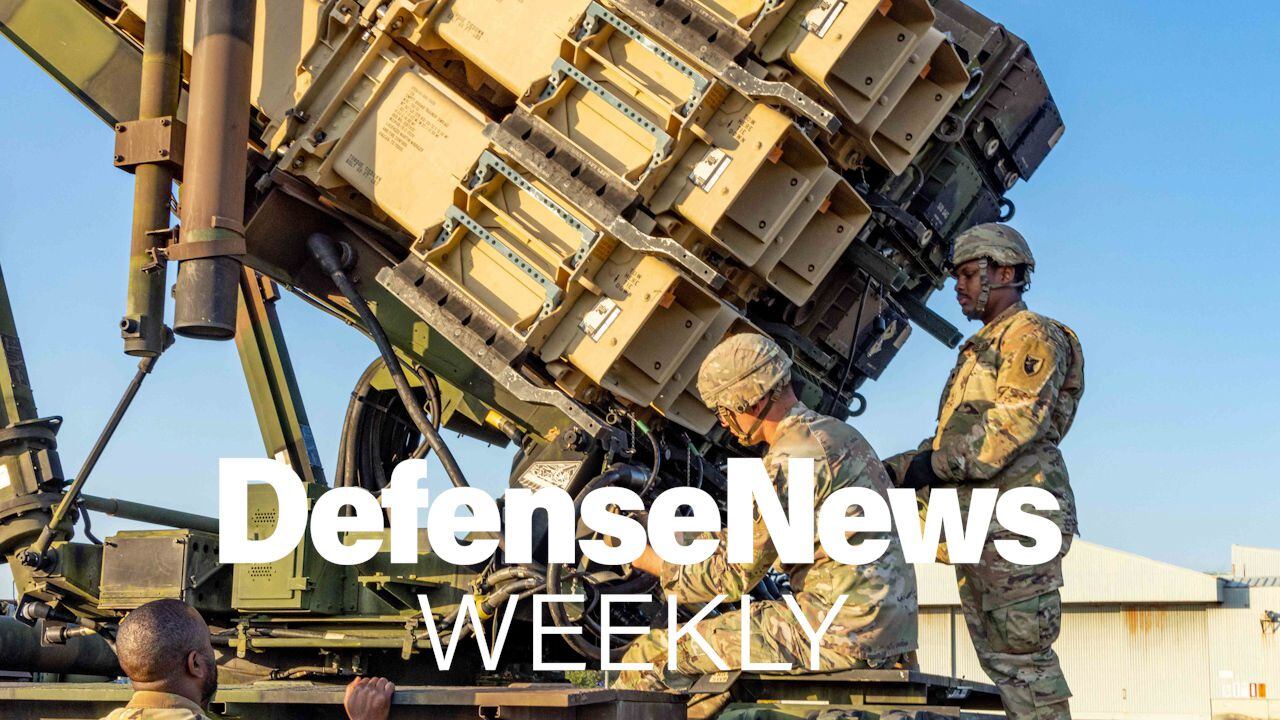The Army is looking beyond ground warfare as it prepares to fight on an increasingly complex and unpredictable battlefield, the senior commander of Training and Doctrine Command said.
"The world I grew up in, during the Cold War, you would have ground forces fighting ground forces, air forces fighting air forces. Cyber didn’t even exist when I was a lieutenant," said Gen. David Perkins. "What’s happening now is those lines are blurring between those domains."
Whether it’s the current threat from the Islamic State terror group or Russia’s actions in Ukraine, the Army, along with the other services, must prepare to fight in all domains, Perkins said.
"We’ve seen Russia and Russian surrogate forces very expertly use the cyber domain and [unmanned aerial vehicles] to facilitate targeting with their artillery against Ukrainian ground forces," he said. "We’ve seen separatist ground forces, via air defense assets, gain air supremacy in the air not by using an air force but by using a ground capability. So what we’re seeing is the ability to take an activity in one domain and produce an effect or dominate another domain."
For full AUSA 2016 coverage visit: http://www.c4isrnet.com/ausa2016
This evolving battlefield has led the Army to tackle what leaders are calling multi-domain battle.
"When I grew up in the Army, we published Air-Land Battle," Perkins said. "By definition, that was two domains, air and land, but, quite honestly, it focused primarily on the land, and the air part was ‘what can the Air Force do for the land guys?’ What we’re saying is that’s not going to work in the future."
Under multi-domain battle, the Army must learn how to operate in and affect all domains in conjunction with the other services, Perkins said.
"What can the Army do to help the Air Force deal with anti-access area denial?" he said. "Rather than cramming a bunch of Joint Strike Fighters in there with a high casualty rate, maybe you use ground forces to take up the air defenses."
In the maritime domain, instead of expending the Navy’s capabilities, maybe the Army’s land-based artillery systems can be equipped with anti-ship missiles, Perkins said.
The goal is to better enable the services to fight together effectively against a common, complex enemy, Perkins said.
"We’ve got to look across all domains simultaneously, and how do we synchronize all domains to present multiple dilemmas for the enemy," he said. "We now are looking at how do we organize the Army, how do we equip it, how do we train it, so it can do that."
For example, the Army already has battlefield coordination detachments that embed with the Air Force, but it doesn’t have the same with the Navy, Perkins said.
"So if we are going to develop an anti-ship projectile to be fired from a land-based Army capability, what is the organization we have to have to coordinate that with the U.S. Navy?" he said. "We really don’t have that now." 
As the multi-domain concept continues to develop, it could change the way soldiers fight in the future, Perkins said.
"If you’re out there in an infantry rifle squad, what we could foresee in the future is you could have access, say, to the cyber domain," he said. "Whether you’re doing it or somebody’s doing it from sanctuary, when the enemy is engaging you with artillery and all of a sudden, boom, it stops, because we were able, through another domain, to take that problem away from you."
In another scenario, soldiers could maybe call on "very long-range precision fires" as they move toward an objective.
"When you’re the dismounted infantryman with your infantry squad, there are these other effects coming in from other domains, and those effects are showing up synchronized with your movements that really empower you to deliver results that you couldn’t with your rifle and hand grenades," Perkins said. "We’re trying to take a lot of the burden off the soldier in the mud by bringing in all these other effects to bear, so he can focus on things that can only be done in person."
Developing and perfecting multi-domain battle won’t be easy, Perkins said.
"When you start thinking of what equipment you need, what kind of network you need, what kind of training you need, this is not easy," he said. "It takes a lot of training, a lot of interoperability, a lot of interconnectivity."
The U.S. military also can no longer count on technological superiority.
"We have great technology, but that’s becoming very transferable nowadays," Perkins said. "Before, if you wanted the plans for a high-speed jet fighter, you’d have to sneak in some place and steal big blueprints. Nowadays, you just need a thumb drive or hack into somebody else’s computer, and you can steal that technology."
That’s why the military relies on its people and emphasizes leader development and training, Perkins said.
"You can’t steal that," he said. "You have to train that, you have to build the force structure to do that. This is our hedge against the transferability of technology, then not only do we have good technology, but we can put it together and use it better than our enemy can." 
In the future, the Army will even more heavily rely on empowered sergeants and lieutenants, Perkins said.
"They have to have a broader understanding of the operational environment they’re in, they have to have a broader understanding of their mission," he said. "They’re operating at a higher level, which means they have to understand everything that comes into play with that."
For example, the Army’s cyber warriors can no longer be the only soldiers in the Army who understand cyber, Perkins said.
"Everyone has to have a basic understanding of the basic capabilities, what the enemy can do," he said. "They have to know enough to put the demand on the system. If a soldier needs somebody to shut down the enemy’s communication, he may not know how it’s done, but he should know enough to ask for it and then when that capability is provided, know how to leverage it. They have to know more than how their rifle works."
For TRADOC, the next step to developing multi-domain battle is to continue refining the concept, Perkins said.
"We’re working very closely with all the services," he said, adding that there already is a multi-domain working group with representatives from all the services.
"What we want to do from the very beginning on this is approach it from a joint aspect because these are joint problems," Perkins said. "Instead of focusing on what’s mine and what am I in charge of, let’s focus initially instead on where are our chances to partner, where are the efficiencies, where are things we can do better to greater effect."
It’s critical for the Army to retain the lessons it learned from Iraq and Afghanistan while preparing for the future, Perkins said.
"Since 9/11, we’ve been captivated by Iraq and Afghanistan, but we don’t want to be captive to that. We want to learn from that," he said. "The future is going to be different. The way the Army is organized and equipped now, having done a very good job in combat, is probably not what we want 20 years from now."
The Army hopes to leverage its combat-seasoned force as it lays the groundwork for the future, Perkins said.
"It’s the perfect time to leverage the combat experience we have and start laying the foundation for the future so we don’t find ourselves behind the power curve," he said. "The timing, both with regard to the talent we have in the Army and where we are historically and where technology is taking us, shows us we’ve got to change, and we’ve got to learn how to change quickly."
Michelle Tan is the editor of Army Times and Air Force Times. She has covered the military for Military Times since 2005, and has embedded with U.S. troops in Iraq, Afghanistan, Kuwait, Haiti, Gabon and the Horn of Africa.








